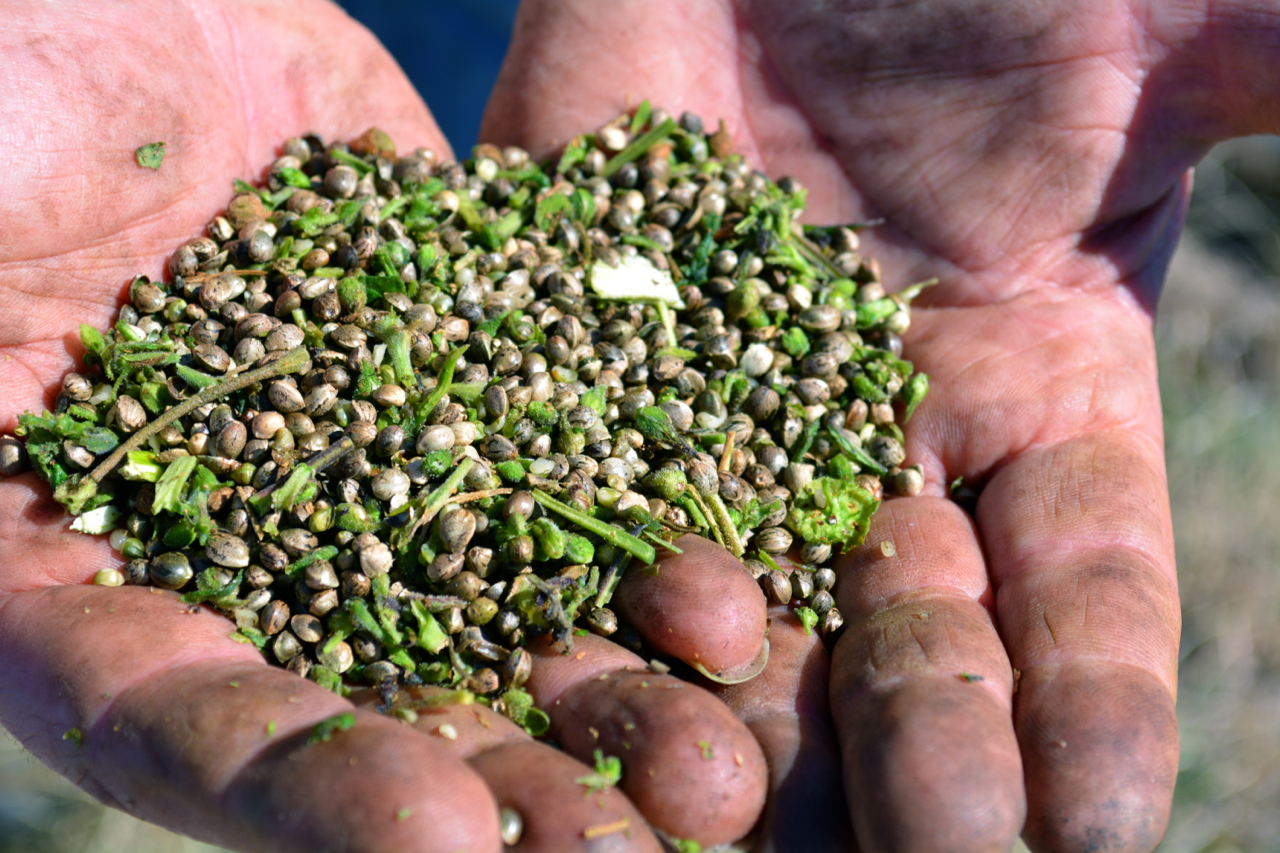Hemp is a variety of the Cannabis Sativa L. plant species, grown specifically for the industrial uses of its derived products. The Hemp plant can be refined into a variety of commercial items, including food, and animal/livestock feed. The Cannabis Sativa L. species branches out to both medicinal cannabis and industrial hemp, and this plant contains the psychoactive component Δ9-tetrahydrocannabinol (Δ9-THC). The seeds of hemp are rich in unsaturated fats and protein, while containing little to no cholesterol. Incredibly, a 100g serving of hemp seeds meets up to 63% of the recommended daily intake requirement for protein (Yang Y, Lewis MM, Bello AM, Wasilewski E, Clarke HA, Kotra LP, 2017).
As we are all aware, Cannabinoids are of great interest today for medicinal, pharmaceutical and therapeutical purposes. However, these markets are governed by laws which regulate the applications of both medicinal and industrial/food consumption products. Whether or not these materials or products are used for beneficial purposes, it could pose potential problems down the supply chain if these regulated properties enter our food or beverage markets from hemp seeds with cannabinoid concentrations that are high enough to have a psychoactive effect.
Within this article we review published case studies on determining the level of cannabinoids in microgram quantities found in hemp seed post harvest and pre-processing for value-added markets. Rarely have researchers or manufacturers questioned or been concerned with the cannabinoids in hemp oil or grain manufacturers for nutritional purposes ( (Alt and Reinhardt 1996, Brenneisen 1984, Struemper et al. 1997). This lack of research left gaps within legislation and quality control, it opened up researchers to discover new methods of analysing cannabinoids within hemp products and thus improved our understanding of food safety and quality control. Now widely known as an extraction of the oil in methanol, for analysis of an oil dissolved in methylene chloride, it allows for more efficient and quicker analysis to be conducted.

Image: Fresh seed sample from the harvester (Hemp Farms Australia, QLD 2013)
Initially, the research and studies conducted included extracts from hemp seed sourced from Hungary and Spain showed this does not contain any Δ9-THC, although tests done on the flowers of these cultivars showed a typical Δ9-THC standard reading. To cross-reference and verify these analysis, researchers selected seed and flower from varieties of several origins (Brenneisen, R. 1984).
Seed varieties from origins such as China, Dagestan, Germany, Canada and Russia, were collected to cross reference and verify using the same methanol extraction. The results showed that even when seed has been agitated to remove adherent particles, the analyses of clean seed proved that there are no cannabinoids present (Struempler, R. E. et al. 1997).

Image: Seed analysis prior to harvest (Hemp Farms Australia, QLD 2019)
It is not uncommon for cannabinoids within trichomes on leaf material to build up on machinery during the harvest and grading process, sticking to the outer shell of seed and making its way into the oil during a pressing process. High quality seed and grain cleaning prior to further processing into food grade products can remove the risk of this occurring and ensure a high quality control within your supply chain.
In addition, if we were to conduct similar analyses on hemp flowers using the same method of extraction, we would find the oil contains a full range of cannabinoids (ie. Δ9-THC, CBD, CBN) depending on varieties and their origins. To conclude, it is evidently shown through research and quality control measure that THC and the majority of cannabinoids do not translate from flower to seed.
Written by: Lauchlan Grout – Co Founder Hemp Farms Australia
References
Yang Y, Lewis MM, Bello AM, Wasilewski E, Clarke HA, Kotra LP (2017) Cannabis sativa (hemp) seeds, Δ9-tetrahydrocannabinol and potential overdose, Cannabis and Cannabinoid Research 2:1, 274–281
Alt, A. and G. Reinhardt 1996. Speiseöle auf Hanfbasis und ihr Einfluß auf die Ergebnisse von Urin- und Blutanalysen. – Oils containing hemp and their influence on the results of urine and blood analysis.Blutalkohol 33: 347-356.
Brenneisen, R. 1984. Psychotrope drogen. Pharm. Acta Helv. 59 (9/10): 247-259.
Struempler, R. E. et al. 1997. A positive cannabinoids workplace drug test following the ingestion of commercially available hemp seed oil. J. Anal. Toxicology Vol. 21: 283-285.
